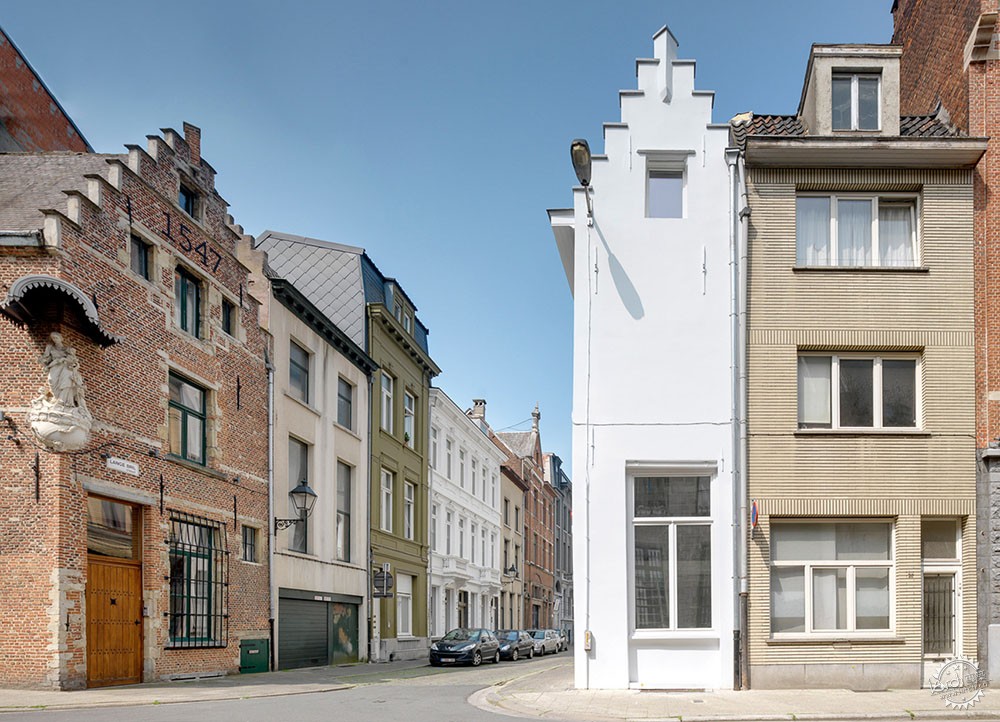
DMVA在安特卫普17世纪的房屋内创建了“一间客房”酒店
DMVA creates One Room Hotel inside 17th-century house in Antwerp
由专筑网缕夕,蒋晖编译
比利时建筑事务所DMVA将对一座17世纪风格的建筑进行改造设计,建筑的外立面仅有2.4米宽,可能是安特卫普最小的酒店。
“一间客房”酒店的设计是为旅客提供度假访问的一间小型豪华酒店,仅有一间双人卧室和其他辅助空间,由楼梯组成的“长廊”相连。
这座位于比利时安特卫普的三层17世纪风格的小房子,最小的立面仅有2.4米宽。而这座建筑是一对夫妇在访问旧城中心时偶然发现的。
Belgian architecture firm DMVA has transformed a 17th-century house with a facade just 2.4 metres wide into what might be Antwerp's smallest hotel.
One Room Hotel was designed as a cross between a holiday home for its owners and a tiny, luxury hotel with just one double bedroom and internal spaces connected by a "promenade" of staircases.
The three-storey, 17th-century skinny house in Antwerp, Belgium, is 2.4-metres-wide on its smallest facade. It was bought by a couple who stumbled across the property while visiting the old city centre.
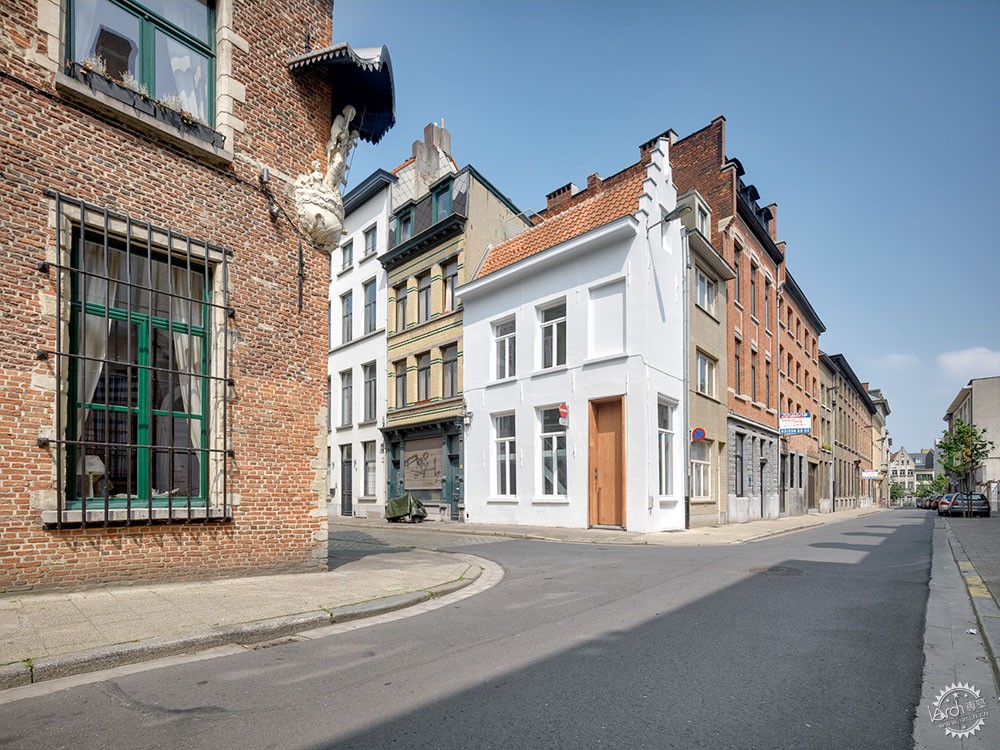
他们决定把它变成一个去安特卫普的旅游的地方,并利用该物业的位置靠近该市中心古老的Grote Markt广场和Neutelings Riedijk建筑事务所设计的MAS博物馆之间的“文化轴线”。
建筑的后面是一个从街上看不见的空间,形成了一个L形的平面,建筑师决定在新建建筑的部分布置服务空间,并使原始结构成为一个“纯粹的”酒店空间。建筑的两个部分共同占地103平方米。
They decided to turn it into a place to stay on future visits to Antwerp, and also capitalise on the property’s location near to the city's "cultural axis" between the ancient Grote Markt square in the centre and the MAS Museum designed by Neutelings Riedijk Architects.
A much later addition behind the house and invisible from the street created an l-shaped plan, so the architects decided to locate all the services in the newer part of the building and make the original structure a "pure" hotel space. Together, the two parts of the house share 103 square metres of floor space.
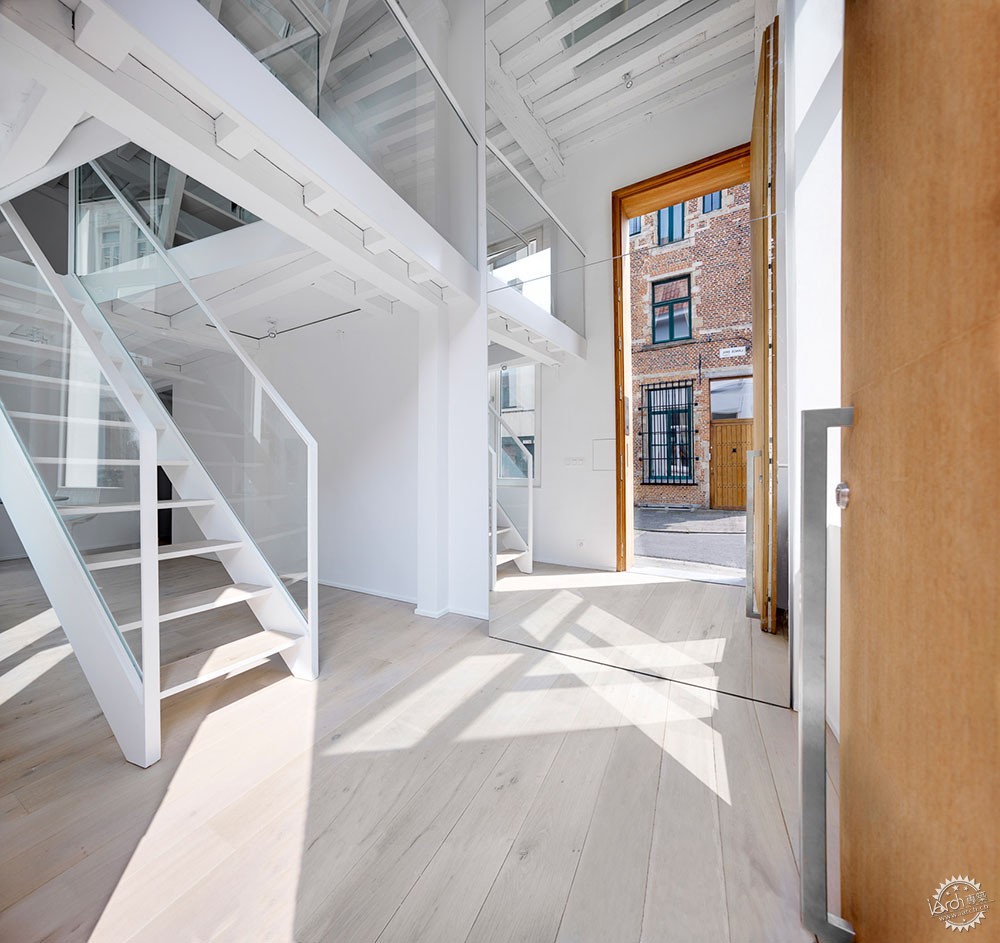
“最初,我担心将一个小型历史建筑改造成一个豪华的‘一间房间’酒店而不涉及历史元素的可行性。”DMVA联合创始人Tom Verschueren告诉Dezeen记者。
“事实上,房子里面的空间远比你想象的更宽敞。后来建筑的后面增加的空间,为设计师创造了尽可能保留17世纪历史特色的机会。”
"Initially, I had concerns about the feasibility of converting a small historical house into a luxury one room hotel without touching the historical elements," DMVA co-founder Tom Verschueren told Dezeen.
"In fact the house was more spacious inside than you would expect from the outside. The later added space behind the corner house created opportunities to preserve the historical 17th-century features as much as possible."
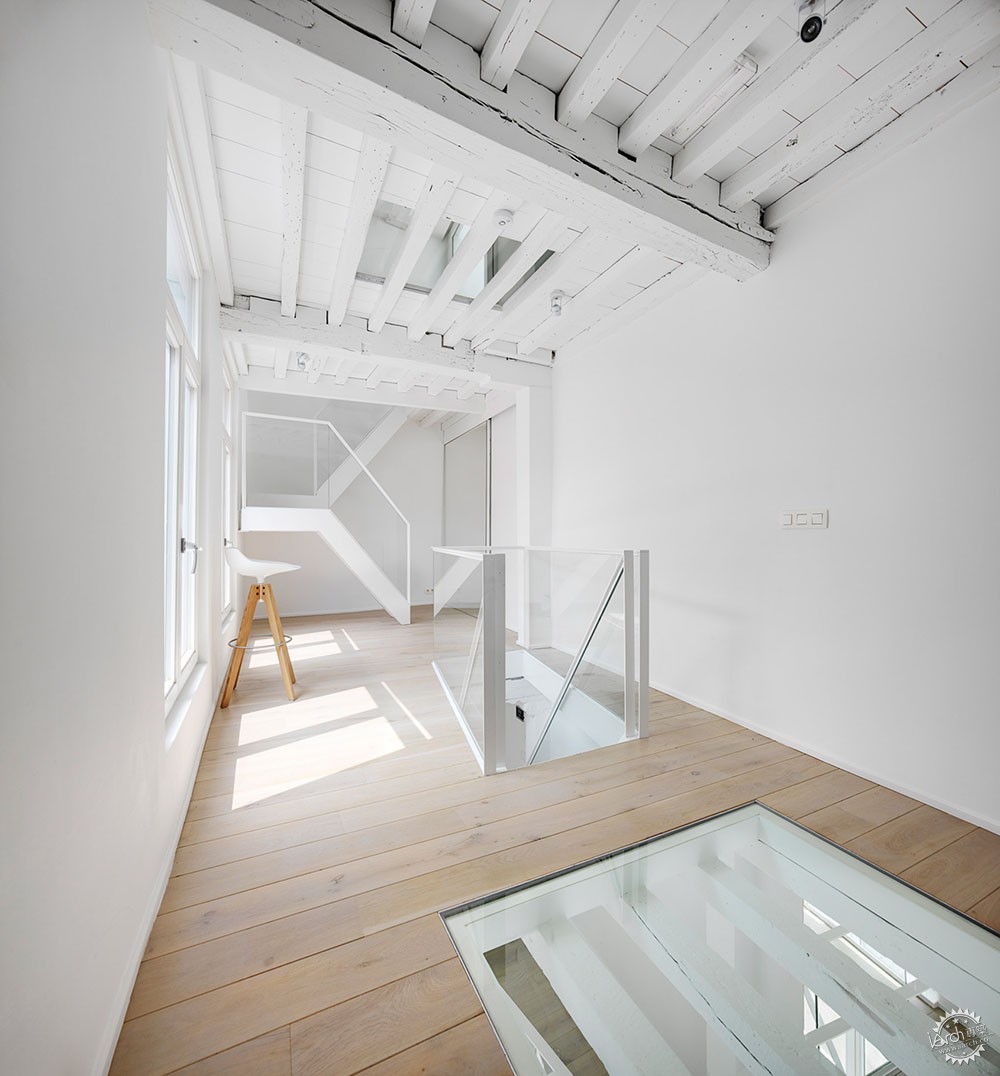

在17世纪的结构里增加了开放式楼梯,包括一个休息室和卧室,作为房子的垂直交通,通往屋顶露台。
Verschueren说:“开放的楼梯像一条‘长廊’一样穿过房子,最后进入白色的庭院,最终可以通过楼梯俯瞰整个城市。”
Open-tread staircases added to the 17th century part of the structure, which contains a lounge and bedroom, connects the levels of the house, leading up to a roof terrace.
"The open staircases wind through the house like an 'architectural promenade' ending up in the white patio where an infinity staircase looks over the city," said Verschueren.
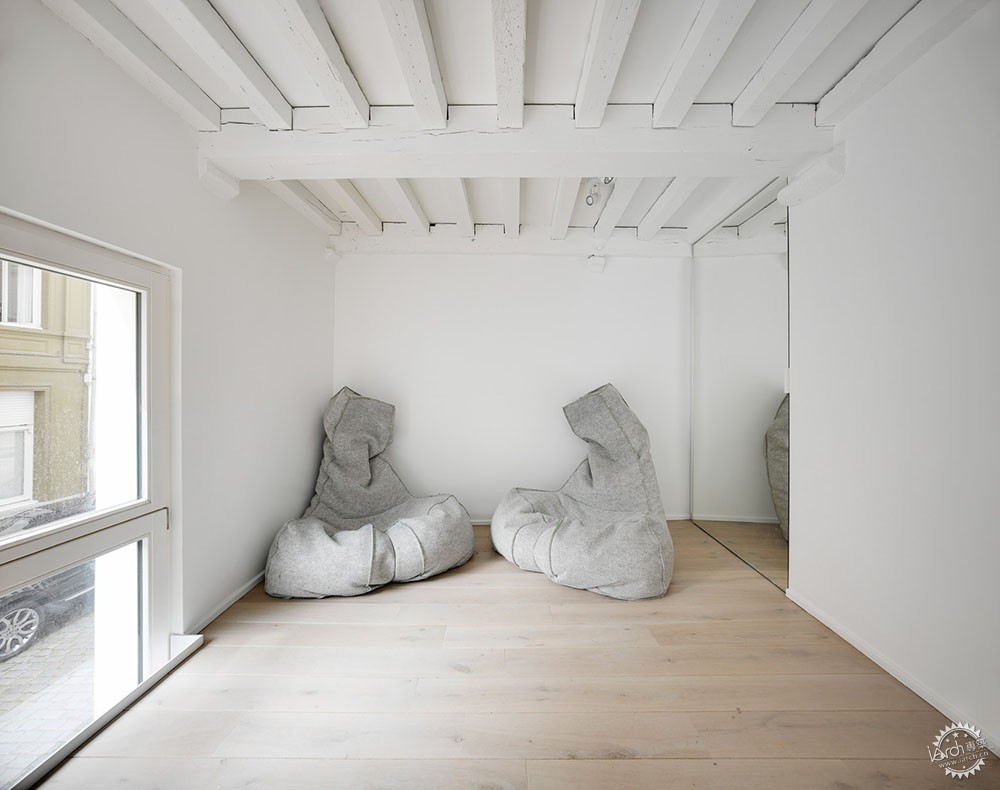
建筑的所有原始部分,如横梁和墙壁,都涂成白色,而新加建的部分,包括前门、楼梯和露台,由木材制成,外露饰面,结构空间明确区分。
根据建筑师的描述,这种方法反映了实践中的物质诚实原则,并且如果需要,还可以使添加的功能在将来容易逆转。
All of the original parts of the building, like the beams and walls, are painted white, while the new additions, including the front door, the stairs and the terrace, made from wood with an exposed finish to make the difference clear.
According to the architects, this approach reflects the practice's principles of material honesty and would also make the additions easily reversible in the future if required.
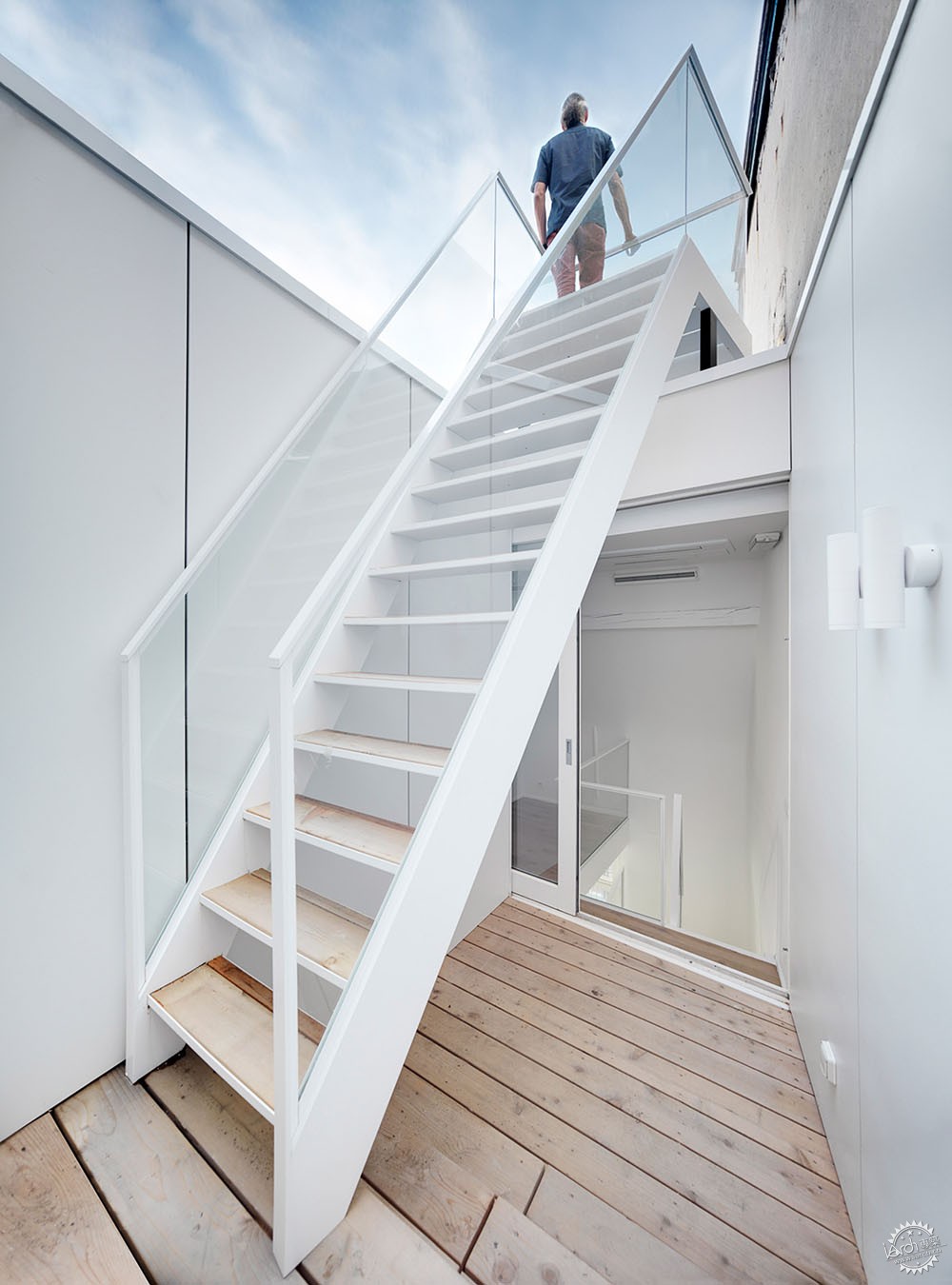
木地板上部分点缀着玻璃,形成穿过房子的对角视图,使这个又长又薄的房子看起来像一个开放空间。
结构的较新部分包括厨房、浴室和小型热水浴缸。部分分区有助于将这些功能隐藏在主要的睡眠和休闲空间中。
The pale wooden flooring is punctuated with sections of glass to create diagonal views through the house, with the intention of making the long, thin house seem like one open space.
The newer part of the structure contains the kitchen, bathroom and a small hot-tub. Partial partitions help to hide these functions from the main sleeping and leisure spaces.
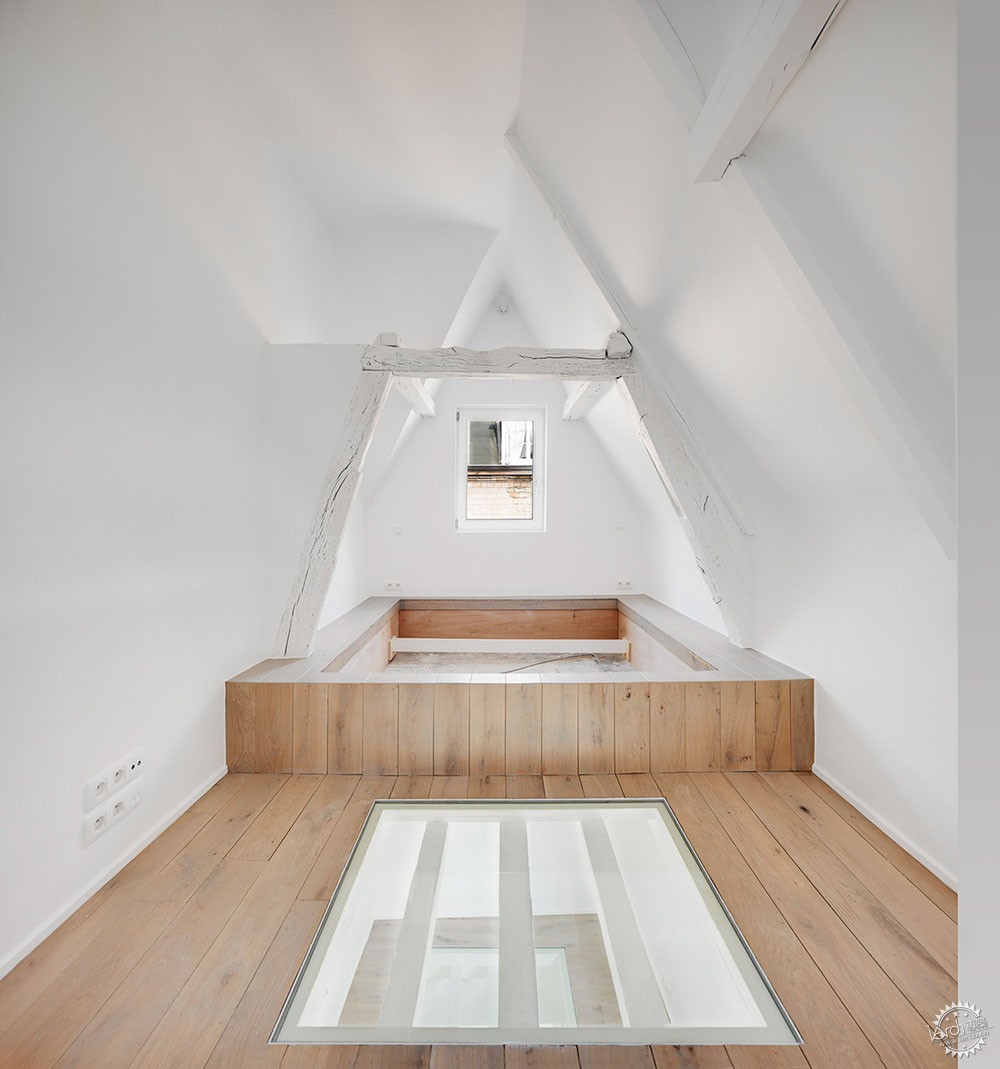
“‘冒险’逐渐成为全球旅游业的关键词,”Verschueren说。“‘一间房间’酒店的概念就是基于此理念。我们相信这种理念的市场将在未来几年内有所增长。”
最近其他寻求利用其他住宿地点的项目包括由特拉维夫的约翰•帕森改建的修道院,纳米比亚受到沉船的启发的远程小屋,被遗弃的西班牙堡垒变成酒店和博物馆。
DMVA总部位于梅赫伦,由Verschueren和David Driesen于1997年创立,他们采用“无风格”的设计手法,在各种项目中试验不同的形式和材料。该公司成就了一系列获奖的单户住宅,而最近的项目包括Maaklab,一个位于Kortrijk的Vives大学的创新空间,以及Mechelen的Stedelijk博物馆Hof van Busleyden的扩建项目。
照片来源:Bart Gosselin
"Adventure is becoming a key-word in the global tourism industry," said Verschueren. "The concept of the One Room Hotel is based on this. We believe that the market for this kind of initiative will grow in the coming years."
Other unusual projects that have recently sought to capitalise on the interest in alternative places to stay include a convent converted by John Pawson in Tel Aviv, a series of remote lodges in Namibia inspired by shipwrecks and an abandoned Spanish fortress turned into a hotel and museum.
Based in Mechelen, DMVA was founded in 1997 by Verschueren and David Driesen and has pursued a "styleless" approach, experimenting with forms and materials across a wide range of projects. The firm first attracted attention with a string of award-winning single-family homes, while recent projects include Maaklab, an innovation space for Vives University in Kortrijk and an extension to the Stedelijk Museum Hof van Busleyden in Mechelen.
Photography is by Bart Gosselin.
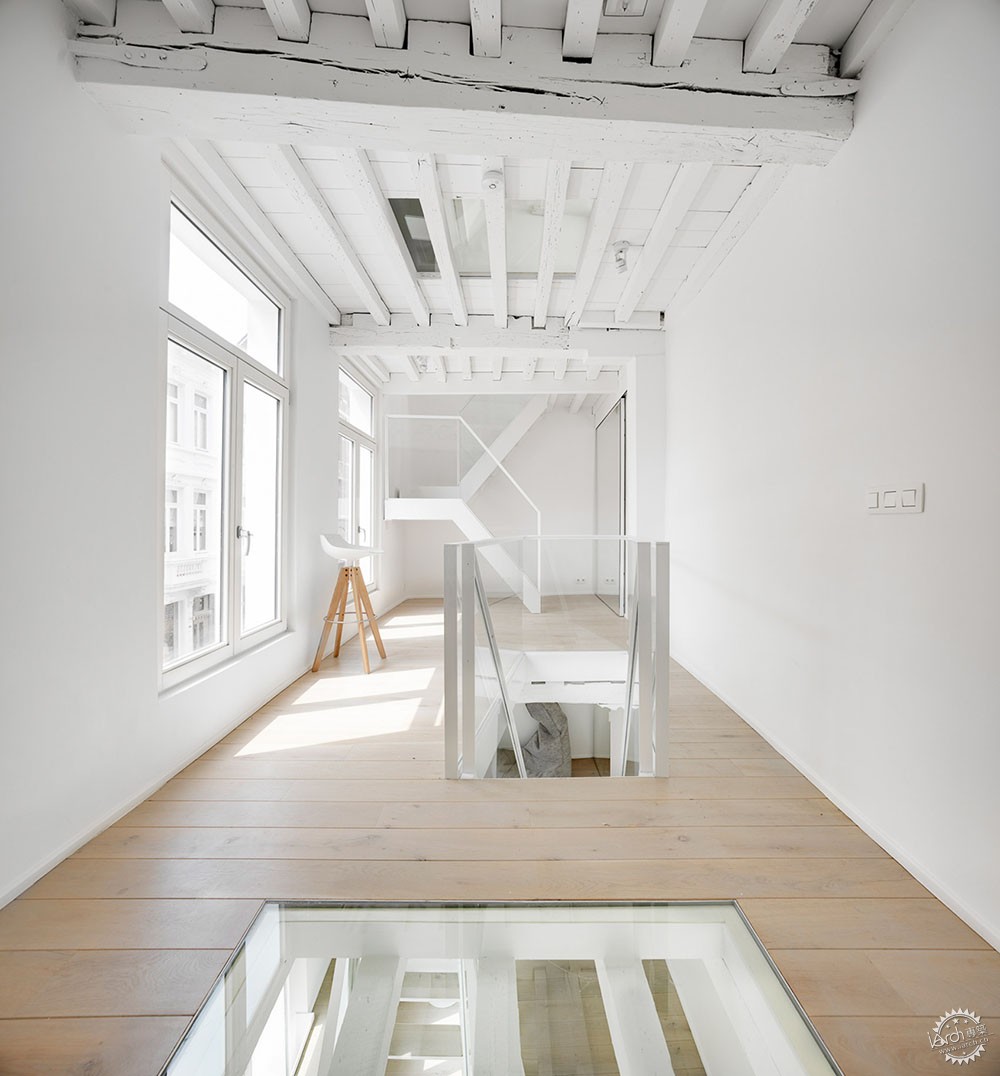

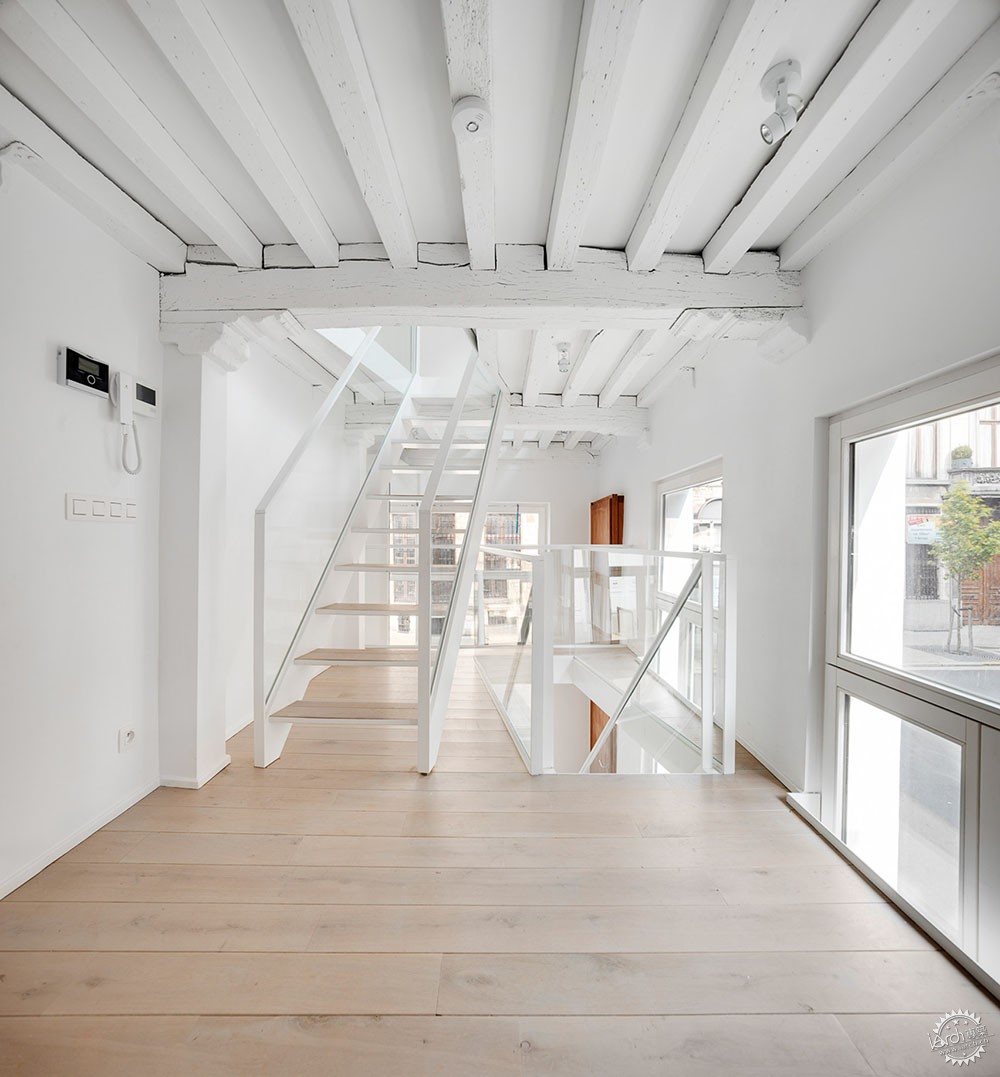
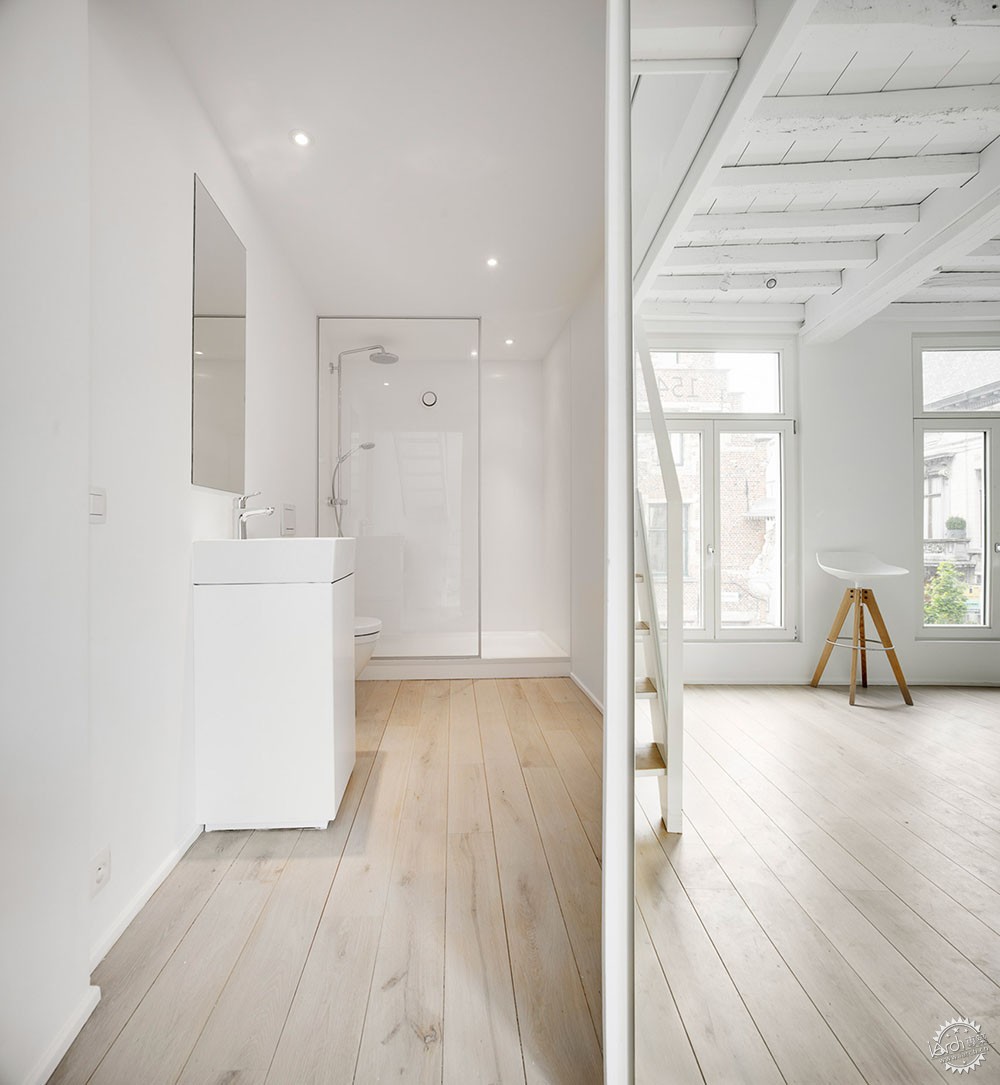



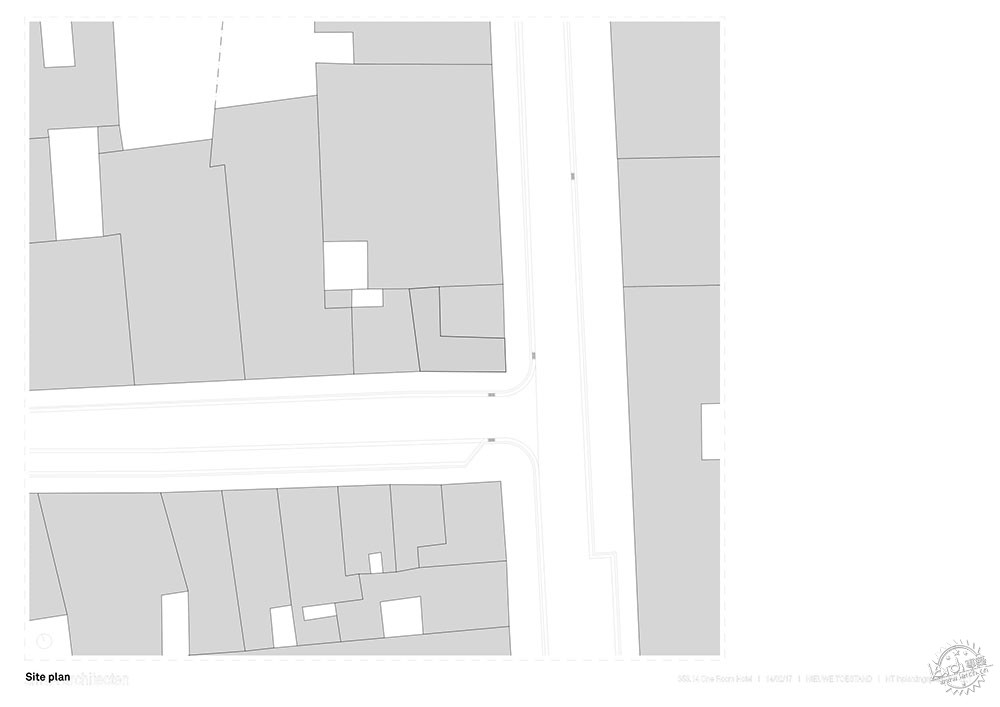
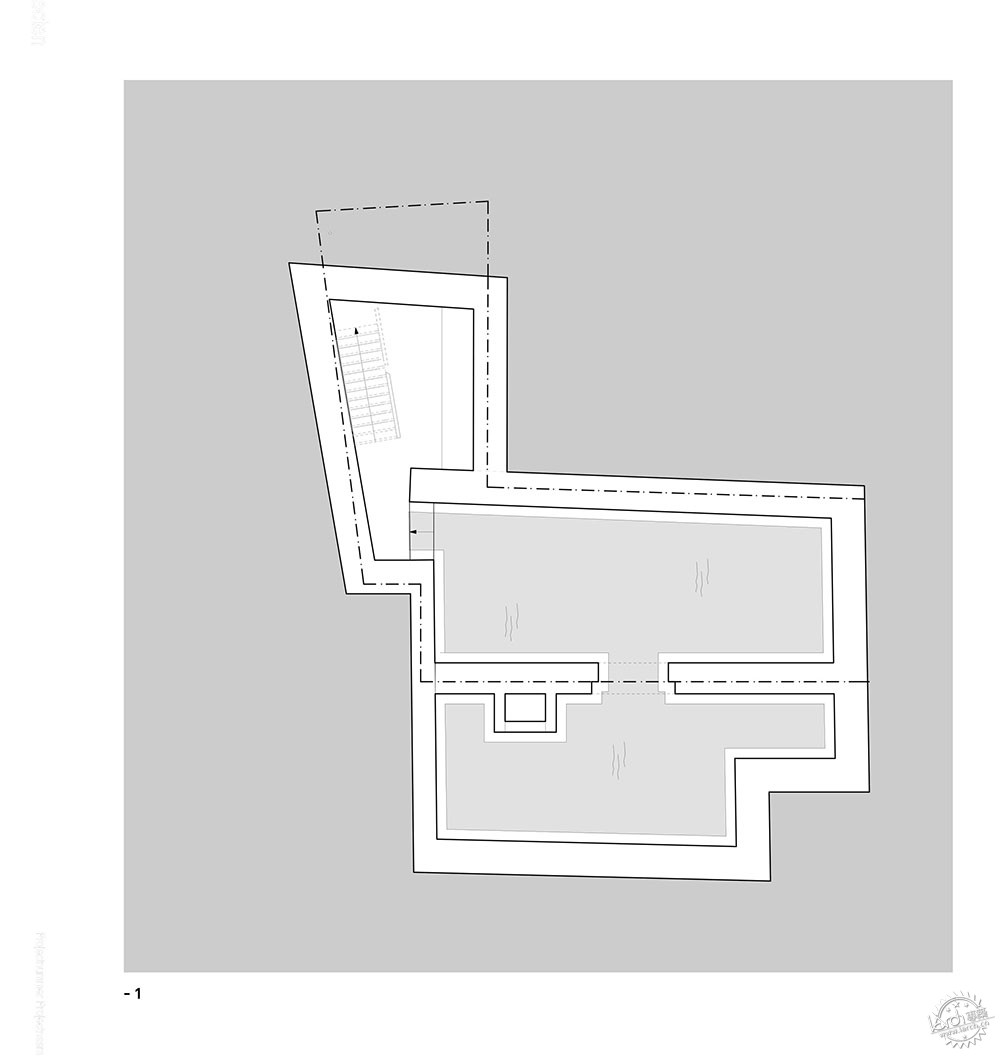
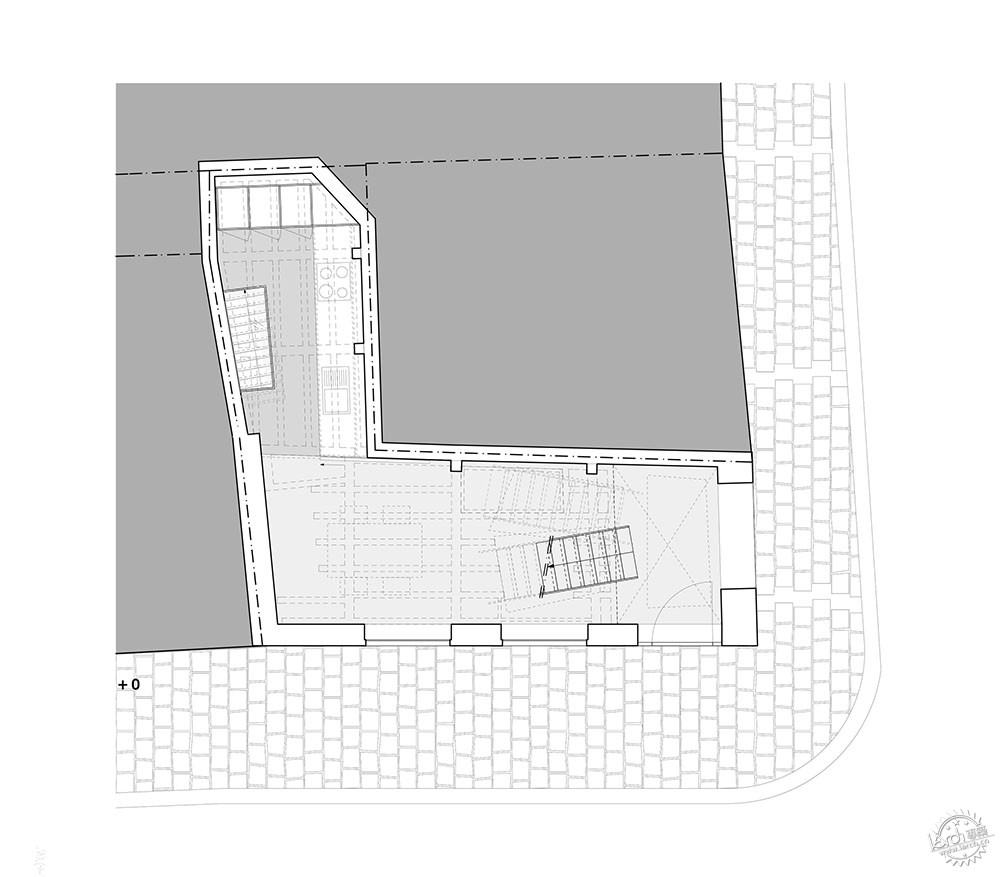
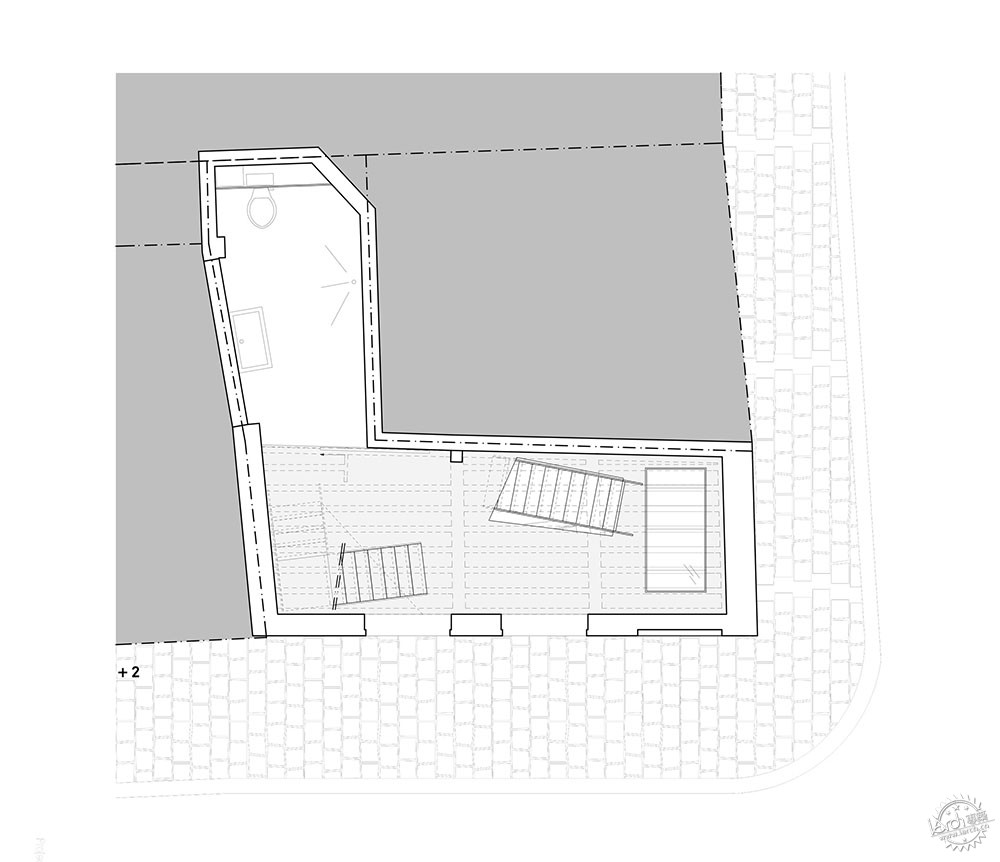


|
|
